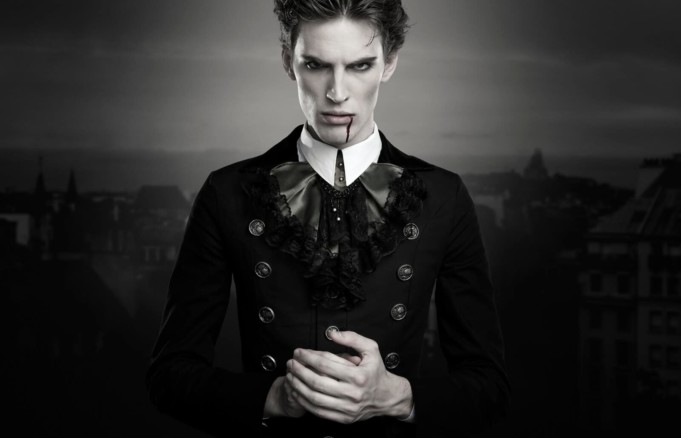The fascination for vampires is as boundless as a vampire’s thirst for blood. Every Halloween party welcomes an attendee dressed as Count Dracula, and homes are decked with bat decors and blood-inspired drinks.
Even Hollywood can’t get enough of vampires, producing movies that reinvent the vampiric folklore for modern audiences. What’s not to love? We’re talking about a creature who looks like a man but whose abilities resemble that of a deity: shapeshifting, flying, and living forever.
It’s hard to imagine, therefore, that the myth of the sparkling Edward Cullen took root in medicine. Yes — though myth and medicine are nothing like one another (they are the antithesis of one another), the vampire traces its origin in science of health.
When medicine could no longer explain the people’s medical conundrums, the concept of the the vampire was born.
Vampires across the World
Before we delve into the medicine-myth origin, it’s important to note that this is not the absolute origin of the vampiric myth. This just explains how the modern image of a vampire — the tall, fanged, dapper gentleman decked in a black coat — came to be.
It is next to impossible to establish when and where the myth arose; vampiric myth is as old as civilization. There are countless versions, but the one thing they have in common (the one characteristic that defines a vampire) is their need to sustain themselves by draining the life force of living creatures.
Vampiric creatures have as many names as there are cultures. In Mesopotamia, people feared the lamaštu, which caused the death of newborn babies and unborn children.
The brahmaparusha of India drinks the blood of its victims from a cup fashioned from the victims’ skull. In Malaysia, the penanggalan spends the day as a beautiful woman.
But when the sun sets, her head severs from her body, hides under the stilts of the houses, and drinks the blood of new mothers.
She’s not very different from her Philippine cousin, the manananggal, whose upper torso severs from the lower half of her body and feeds on the blood of pregnant women.
The most renowned sort, of course, is the Western vampire, which takes a human form but can shapeshift into a bat. The vampire cannot stand sunlight, which is why it prowls only at night. This version of the vampire has a much more concrete beginning: 1700s Europe.
Supernatural Creatures Cause Unnatural Deaths
In 18th-century Eastern Europe, stories of blood-sucking shadowy creatures were popular among the common folk. And the age’s mysterious events only fuelled these myths.
The century was marked with deaths from unknown causes and plagues. Medical knowledge was still rudimentary, and a majority of people turned to either religion or superstition to explain what science cannot explain.
To illustrate, imagine an isolated but populous village. There’s no internet connection here, so doctors from more advanced cities can’t perform virtual check-ups or use e-prescribe services. People don’t believe in waterborne and airborne infections. There is no penicillin or vaccine. The most common treatment is rest.
Without modern medical knowledge, it is much easier for Eastern Europeans to believe that supernatural creatures were behind all the puzzling symptoms and deaths.
A Misunderstanding of Corpses
If the people then did not fully understand the living body, they did not fully understand how corpses decompose, too.
Since the sicknesses and deaths were mysterious, they dug up dead bodies to find clues that could somehow help the living victims. What they found, however, was evidence that the cadavers were still living.
Their hair and fingernails continued growing, and their stomachs are bloated from, presumably, eating shortly before. The most incriminating evidence, however, was the blood oozing from the corners of the mouths.
The explanation was clear. These corpses are not only undead, but they rise in the night to hunt and feed on the living. The people responded with all sorts of rituals, like digging up graves, beheading the corpses, and nailing them to the coffin to prevent them from rising.
The vampire hysteria spread so fast across what was then the Holy Roman Empire, that Empress Maria Theresa sent her personal physician, Gerard van Swieten, to investigate.
The doctor found a rational explanation for the state of the supposedly undead bodies and concluded that the fears are unfounded in a scientific refutation. The empress then enacted laws that prohibited grave tampering.
From Corpse to Nobleman
The empress has successfully stamped out the vampire hunt, but the legend of the blood-sucking undead man persisted throughout Europe. It inspired several novels, including “The Vampyre” by John William Polidori and “Carmilla” by Joseph Sheridan Le Fanu.
When Bram Stoker published “Dracula” in 1897, it was only a moderate success; “Carmilla” and “The Vampyre” were still leaps and bounds ahead. At the time of Stoker’s death in 1912, “Dracula” was not his most famous work.
“Dracula,” however, was pulled out of obscurity by an intense copyright battle.
In 1922, a German studio produced a film titled “Nosferatu,” an adaptation of Stoker’s book, but it did not pay royalties. The similiarity is uncanny; the lead vampire in “Nosferatu” shared the same characteristics as the one in “Dracula.” The studio was sued and lost.
To prevent more issues, Stoker’s widow, Florence Balcombe Stoker, established copyright, which then gave way to a Broadway production. The play was a huge success, thanks largely to the performance of Bela Lugosi, who gave the character its iconic charm, accent, and cape.
The legend of the nobleman vampire was further cemented when Lugosi starred in a 1931 film adaptation. Since then, Hollywood has produced countless movies about the Transylvanian nobleman, one of the latest being “Hotel Transylvania.”
It’s safe to assume that every new decade will bring a new movie, play, or literary work that will expand this lore. Much like the vampire, this myth won’t rest in peace in a satin-lined coffin; it will go on to live forever and haunt the imagination of every generation.













